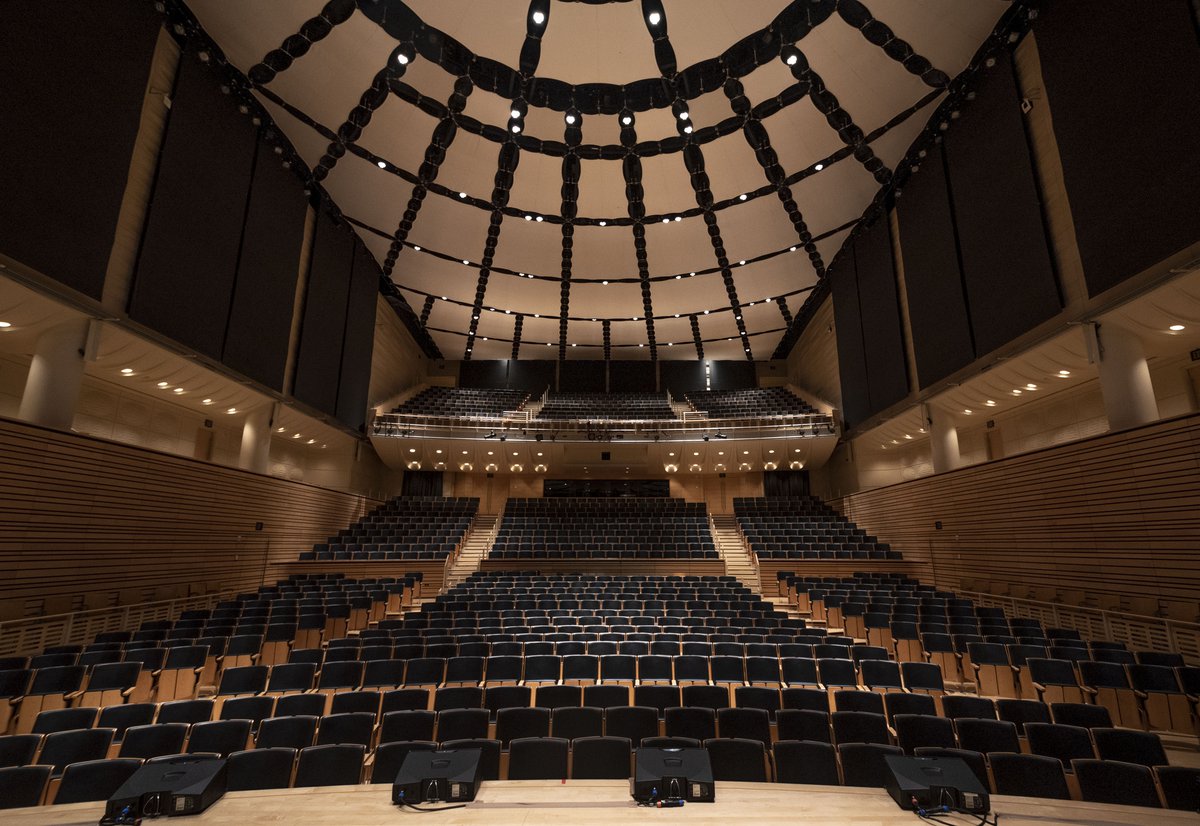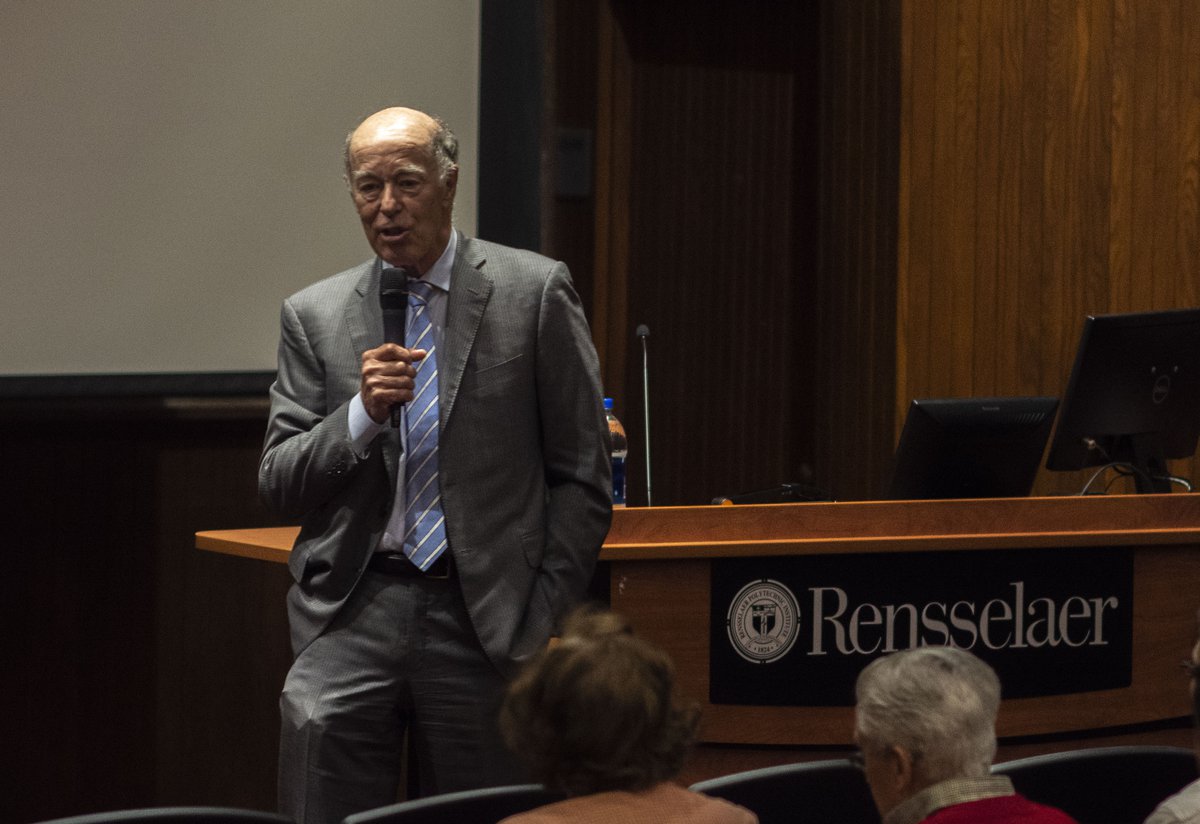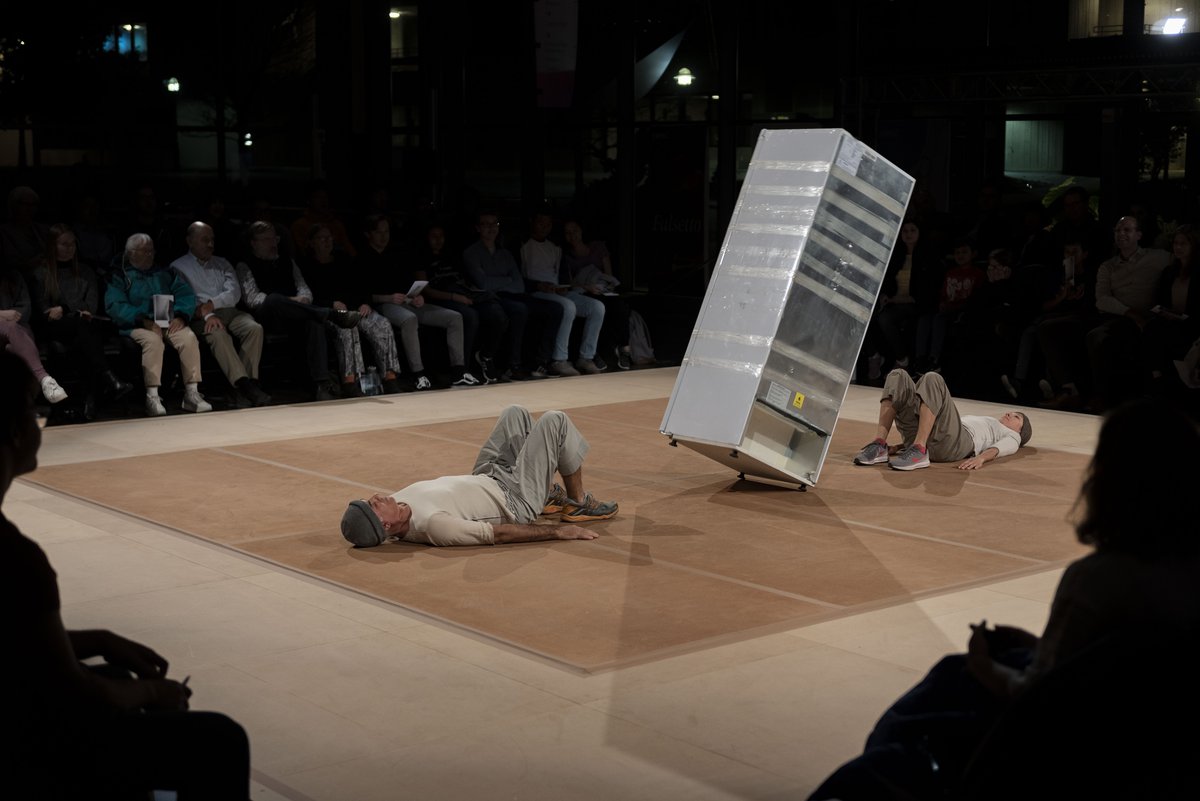Artfully acoustic architecture explained

I attended acoustician Zachery Belanger's talk "Sound: A New Approach to Integrating Architectural Design and Acoustics" at the Experimental Media and Performing Arts Center last semester. Belanger's talk was driven by his inquiry into how all the elements of EMPAC venues—panels, walls, cloth ceilings, and more—all join to create stellar acoustic spaces.
Belanger was instrumental in designing spaces in EMPAC, but despite this, he acknowledged that the field of acoustics is new compared to other sciences and that he does not have an explanation for how the design of the spaces specifically creates certain acoustic results. Using his background in physics and coding, he strives to develop a scientific explanation to allow EMPAC's techniques to be reproducible and understandable. Belanger’s talk aimed to help bridge the gap between acousticians and architects, or as Director of EMPAC Johannes Goebel punnily described, connecting the difference in “wavelengths” of acousticians and architects. Belanger is confident that the understanding of designing a space to have more surface area will produce better acoustic results and will guide architects in the correct direction.
Unlike other EMPAC events I have attended in the past, very few students attended. Instead, the seats of Studio 2 were filled mostly with EMPAC staff members, Rensselaer professors, acousticians, and architects. While this talk was not aimed toward students, Belanger's use of thought experiments and visuals helped make the complex content of the talk approachable and understandable.
Goebel introduced the talk and described Belanger's contributions to the design of the EMPAC since its inception. Goebel recalled his team's process of designing the panels that line the interior of Studio 2. His inspiration for the unique panels was his love for an acoustically surreal experience he had while performing in the middle of the woods. His idea was to replicate the pattern of bark on trees onto panels, which then Belanger helped implement. Belanger then began his talk with a thought experiment that helped guide audience members into the mindset of acousticians.
“Interdisciplinary learning” are words that are often used when talking about life as a college student. In my three months at RPI so far, I have certainly had experiences that have encouraged me to think across different disciplines, for instance, education, psychology, interactive media, and history in my History and Culture of Games course. As a computer science student also interested in media and the arts, I was pleasantly surprised by the content of this talk. This talk offered a rewarding deep-dive into the process of how EMPAC spaces are designed, the challenges of the collaboration of architects and acousticians, and a vision for the future of acoustics and architecture. Through thought experiments and illustrative visuals, Belanger connected the fields of acoustics, architecture, and computer science. To help the audience understand how the architecture and the design of the shape of a space influence sound, Belanger projected a variety of differently shaped spaces: flat walls, a circle, jagged walls, and more. Following each different shaped space, Belanger played a computational model of the movement of sound waves in the space, to demonstrate how differently shaped rooms affect its acoustics.
By coincidence, the topic of my computer science lecture before the talk was recursion. While I understood how to code recursive solutions to the problems introduced in class, I planned to further read about how recursion is used to solve larger problems. As time passed in the acoustic models of each of the spaces, the patterns of the traveling sound waves became more intricate as they collided with each other and the walls, much like Sierpinski’s Triangle, which I was introduced to in my recursion lecture. Later, he also added a chair to a space, to demonstrate how the composition of a space also influences acoustics.
Belanger’s talk was excellent. When I am in different buildings and spaces on campus, I now find myself observing the shapes of rooms and trying to predict how sound travels through the room based on the patterns I saw in the computational models he presented. This talk tangibly delivered an “interdisciplinary learning” experience that is promised by a college education. Taking a step back and looking at the bigger picture, is inspiring and motivational, especially when trying to learn a challenging topic. It affirms the reason for working hard in courses to understand the material in efforts to help solve important and interesting problems and challenges in the future. Rensselaer offers a variety of such opportunities to students in many different fields.

 Guest Speaker
Guest Speaker
 Empac Event
Empac Event
 Empac Event
Empac Event
 Community Recipes
Community Recipes